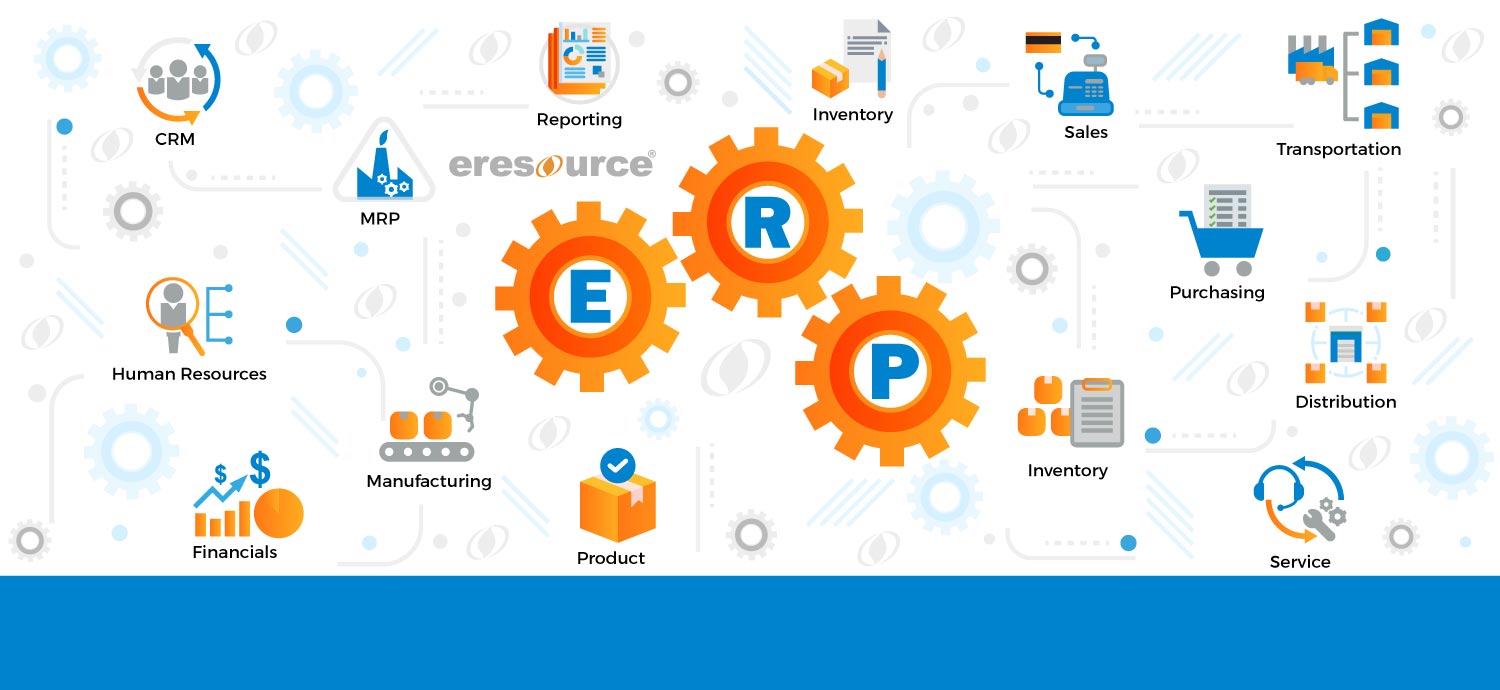An enterprise resource planning strategy known as two-tier ERP employs two systems to meet the needs of large companies with several locations and/or subsidiaries. A Tier 1 ERP, which is highly customised and has the capacity to manage a large, worldwide firm, will be used by the headquarters in this strategy, while subsidiaries or smaller business units will utilise a Tier 2 ERP, which is less resource-intensive and better suited to their needs.
With two-tier ERP, the company links the two ERP platforms so that data flows from Tier 2 to Tier 1 automatically. This makes it possible to manage master data, or to provide the entire organisation with accurate data from a single source. Although each system’s duties can differ, the Tier 1 software frequently manages essential corporate operations including finance, human resources, and procurement. The Tier 2 system oversees operations that are more unique to each subsidiary or location, such as sales, marketing, or manufacturing processes.
Why it is the best alternative to older ERP systems?
Vendors created less priced suites with more prebuilt capability as alternatives to older ERP systems that burdened businesses with time-consuming, expensive, typically on-premises installs and demanding setup requirements. As a result, this ERP strategy gained popularity. Numerous businesses came to the conclusion that a two-tier strategy was much more practical and time-efficient than updating the Tier 1 ERP or transferring a new subsidiary or acquired firm to its enterprise software.
Also Read – Tips to Choose the Best ERP System for the Automotive Industry
ERP systems fall into two separate types, each having a variety of features and functions that are tailored for organisations of a particular size.
Tier 1 ERP system
A Tier 1 ERP is created for the biggest companies in the world with global operations. It costs a lot of money to build, maintain, and upgrade these systems. Long implementation timeframes result from the work required to tailor them to the diverse requirements of the business. The management of this software is often handled by an IT department in businesses.
Tier 2 ERP system
For small and midsize businesses, Tier 2 ERPs are created. Compared to Tier 1 software, this sort of ERP is typically far less expensive and simpler to implement. Some of the products in this group cater to certain industries, such as manufacturing or retail, and offer more pre-built functionality for accounting, sales, human resources, and supply chain (including order and inventory management). Tier 1 and Tier 2 ERP solutions could both be provided by the same software provider.
Also Read – Best ERP for EPC companies
Benefits of ERP in Two Tiers
Businesses that want a robust system at the corporate level but require a complementary solution for subsidiaries or worldwide locations are increasingly using two-tier ERP.
On a strategic level, any attempt to impose a monolithic Tier 1 ERP system upon an acquired company is likely to result in disruption, which is the last thing an acquirer wants. The benefits of a more lightweight Tier 2 system that is more adaptable become obvious if the objective is to assist the subsidiary in operating more efficiently and profitably. The parent company’s access to data is unaffected, and the IT team is spared the hassle of connecting (potentially very) dissimilar ERPs.
Not that there won’t be some disruptions, though. The main company’s Tier 1 ERP may not be compatible with the subsidiary’s extremely basic system, or perhaps there isn’t any contemporary financial software in use at all. The IT team or integration partner would be wise to convince the subsidiary of the practical advantages of having its own ERP in that situation.
Also Read – Benefits of ERP in Logistics and Transportation business
The advantages of a two-tier method in practise include:
Cost savings:
This is arguably the most alluring feature of two-tier ERP, particularly for businesses facing additional expenses related to M&A activity. Costs for implementation, upkeep, and upgrades are typically affordable, especially if the parent business has standardised several subsidiaries on the same Tier 2 system. Furthermore, the corporation might reduce some IT manpower, particularly owing to redundant jobs, or move that talent towards projects that benefit the business more directly because the Tier 2 system requires less maintenance and can share IT resources with the corporate office.
Meet particular company needs:
Depending on what it sells or the sector it serves, a business unit inside an organisation may have distinct software requirements than the main business. Simply put, the finance department of a smaller organisation will operate more efficiently with an ERP designed specifically for their needs than they would be able to with a Tier 1 system.
Also Read – Benefits of ERP Systems in the Food Industry
Increased control and flexibility:
Since a Tier 2 ERP is less complicated and “lighter,” it may be modified more quickly and easily as needed. This gives these smaller parts of a big company the ability to react quicker to market changes or changes in consumer behaviour. Additionally, it grants these entities greater control over their procedures and processes.
Consider local requirements:
A subsidiary in another nation can require a system that employs a different language or currency and must abide by local regulations. It’s possible that this office’s operations are impacted by undetectable regional or cultural differences. If they are not supported by the Tier 1 system, all of those unique considerations can be accommodated by a Tier 2 ERP.
An improved user experience: Tier 1 systems can have a steep learning curve and are challenging to use. An intuitive user interface and a superior user experience are more likely to be found in a Tier 2 ERP. Additionally, this might lower the price of training.
Also Read – Cloud-based Construction ERP Software
Categories
Register for Free Demo!
Recent Post
-

eresource ERP 360 - an
11th Apr 2019 -

A competitive ERP system for
17th Apr 2019 -

Auto components manufacturing industry has
17th Apr 2019 -

Make the best use of
17th Apr 2019






